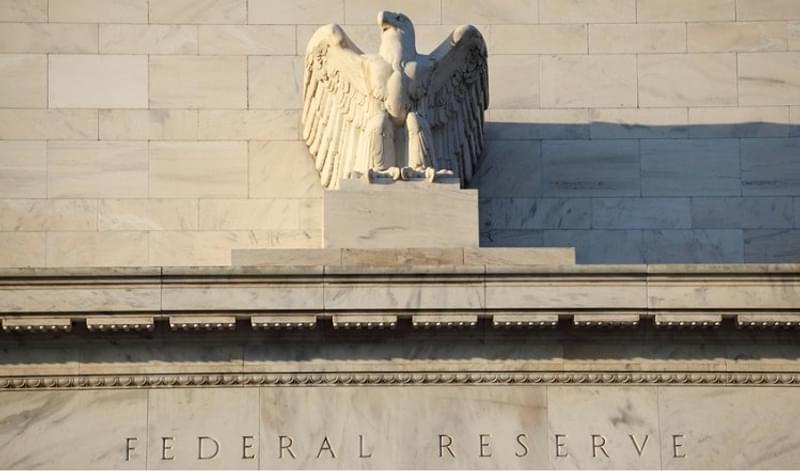Donald Trump’s surprise victory over market-favourite Hillary Clinton in the US Presidential election caused market expectations of a December rate hike by the US Fed to fall below 50%.
However market sentiment, making somewhat of a U-turn only a day after the vote, now has a less negative view of what a Trump Presidency might entail. Correspondingly, the expectation that the Fed will hike in December has now risen to around 82% - roughly where it was when a Clinton victory was expected.
Although a December hike appears likely, it will not be the start of an aggressive hiking cycle, as the Fed will be unable to hike at a consistent pace.
“The Fed will not be able to step up materially. Never before in US history has the economy reached full employment with the Fed funds rate at just 25bp,” said Jan Dehn, head of research at Ashmore Investment Management.
“Inflation is coming,” he continued. “The Fed would need to hike 8 to 9 times just to get to neutral, which is extremely unlikely.”
10-year US Treasury yields have risen over 2% for the first time since January, and are currently yielding 2.15% according to Bloomberg.
Expectations of rising inflation and a hiking cycle in the US have caused money to flow out of EMs and back into US Treasuries.
Inflation is set to rise on Trump’s plan to stimulate the economy through heavy borrowing and spending, especially on long-dated investments such as housing. This is also why the Fed will be held back from hiking rates too quickly – Trump will not want to borrow at elevated rates.
“Trump will do a Reagan – meaning massive spending. This will drive up demand, but the supply side is weak and productivity is actually negative, so we will soon see inflation. Trump is all about creating jobs and getting the economy going in the next four years in order to secure re-election for a second term,” Dehn said. “Short-termism prevails.”
He added that the Fed will have to accept higher inflation for the higher growth Trump will look to create. “Trump will have to sit on current yields in order to get meaningful growth, but this will create inflation. The Fed will have to accept higher inflation for higher growth,” he stated. “The Fed delivers, or the Fed is replaced.”
Although the Fed will not maintain an aggressive hiking pattern, it is likely to gradually tighten monetary policy. Dehn noted that the Fed will maintain a hiking pace of 1 to 2 hikes per year, but added that if inflation rises it may hike faster.
“The Fed wants to appear to respond to inflation, but at the same time will not want to jeopardise growth. The way to square this circle is to hike exactly in line with rising inflation, thus keeping real rates flat.”
The problem with this policy however, is that it will lead to higher inflation, and thus a weaker dollar throughout Trump’s tenure.
With the dollar set to decline next year, money will flow out of the US and into EM, according to Dehn. “EM currencies will gradually rise, and inflation will fall correspondingly – which will cause EM central banks to respond by modestly cutting rates. The current volatility in the markets is an excellent buying opportunity, particularly for EM local bonds.”
Any changes to the US yield curve and the US dollar will be of particular interest to EM portfolio managers who are using the uncertainty caused by Trump’s victory to add to their EM positions.
Furthermore, the fact that the Fed is behind the curve over fears that raising real rates could derail the economy, combined with the fact that the US economy is nearing full employment on only one rate hike, have raised the market’s inflation expectations. That has in turn pushed long end of the US yield curve higher – albeit without a corresponding rise in real rates.
“Needless to say, the long end of the curve in the US is extremely vulnerable. US 30-year bonds are up by 15% year-to-date, but as recently as July some two-thirds (10%) of the year-to-date return has now been wiped out in two vicious bouts of bear steepening in the second half of 2016. Last week alone, the loss was more than 5%, which is more than twice the loss in EM local currency bonds.”
US 30-year bond yields have risen over 40bp over the course of the week, and are currently yielding 2.94% according to Bloomberg, which also noted that a US$15bn auction of the 30-year Treasuries showed waning appetite for the securities.
EM local currency bonds by contrast are only down by around 2%, with returns for the year up at about 13% in dollar terms.
“If the government sits on the long end of the curve to prevent it from killing the recovery, inflation will begin to rise faster than yields, causing real yields fall and the dollar to weaken,” Dehn noted. “Hence, EM bonds will not only pay better, but they will also be far less risky than developed markets bonds.”
In addition to causing a rise in inflation, Trump’s borrowing plan will also add to the already substantial problem of the US’s overall debt stock.
Although Reagan’s fiscal stimulus began with the total US debt stock at 188% of GDP, under his presidency debt-to-GDP increased by nearly 10% per year, reaching 262% of GDP by 1989.
The fact that the total US debt stock is now 376% of GDP (644% of GDP including unfunded Medicare and pension liabilities) is more of a concern if Trump’s spending plan turns out to be anything similar to Reagan’s.
According to Bloomberg, Trump’s proposals would increase the US’s debt by US$5.3tn. The US’s marketable debt more than doubled under Obama to nearly US$14tn.









